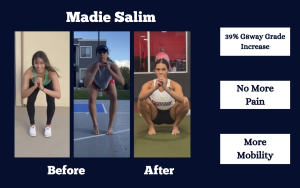-
Decompression 101
In case you didn’t know, gravity constantly affects your body in a way that creates compression on your joints. With that in mind, how can we combat this constant compression? Various activities and devices can be utilized to decompress the body for pain relief, especially in the lower back and hip region. We can use prone and supine decompression exercises, vertical decompression tables, breathwork combined with movement, and improved sleep positions to benefit the body and decompress the spine.
Decompression comes in many shapes and forms. Laying on the ground is a great way to learn what decompression feels like. Not only does the earth heal the body, but it is also where our movements originate when we are babies. Sitting, crawling, and laying on the ground benefit the body in a very decompressive way. For example: laying on the ground with your feet on a chair, couch, or any elevated surface (approximately 2 feet off the ground) will help the hips sit in a great position. This will also take pressure off of the lower back. Basic decompression techniques come with more detailed decompression exercises. The prone and supine decompression series in the G8way Max programs explain in depth how to perform a more complicated form of decompression.
Another way to decompress is by using tools like the vertical decompression table. The decompression table allows the body to create space by hanging from the ankles. This process reverses the effects of gravity. Even hanging from a bar using your hands is helpful. In doing so, you also focus on grip and shoulder strength. Using a decompression table allows the body to relax while reversing the effects of gravity. Finally, the benefits of hanging upside down are not just for decompression and spinal health but also to increase brain function and lower stress levels.
Using our breath to decompress is a subject that comes with fidgeting. The concept of fidgeting is fundamental along the recode journey, which can be learned through our educational videos in the G8way Max programs. Breathing in specific positions will help you find space in joints and even align your body. This concept is arguably the most complicated form of decompression but can be easily practiced in a column wall sit. Within the column wall sit, practicing the founder position targets explicitly how to decompress while standing.
Sleeping can be one of the easiest ways to decompress if we sleep in a healthy position. Naturally, we use sleep or rest to decompress. However, we are not only talking about relaxing the body here. Sleep is also used for calming the mind and easing stress. Learning to meditate is also a good alternative throughout the day, taking twenty or thirty minutes to lie down and focus on relaxing. Sleep positions such as the fetal position or laying on your back with a pillow under your knees are optimal, but there are many ways to alter how we choose to sleep, which can be seen in our Sleep Better G8way Max course & our sleep education videos.
Sorry, there were no replies found.
Log in to reply.

